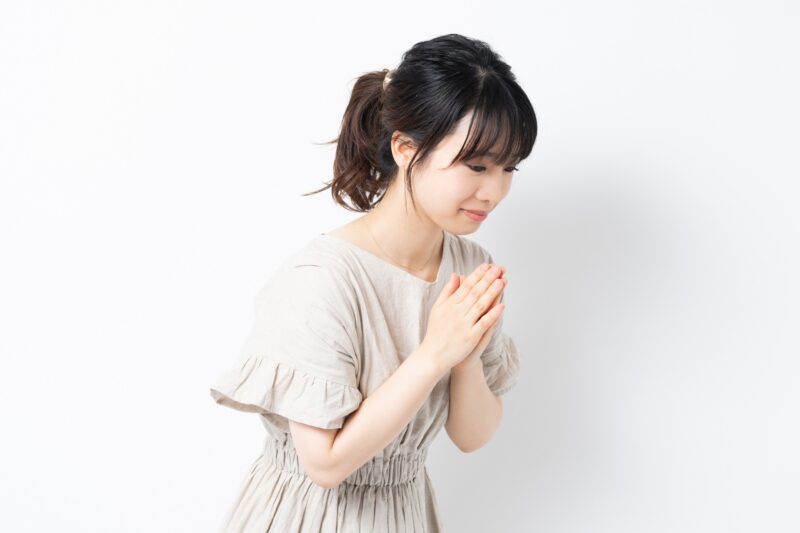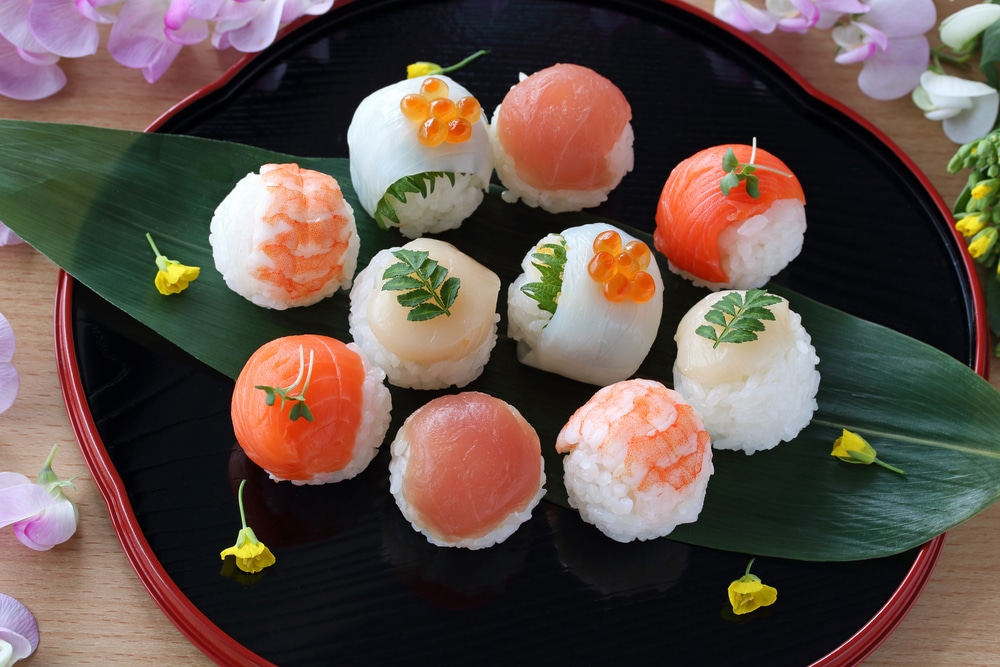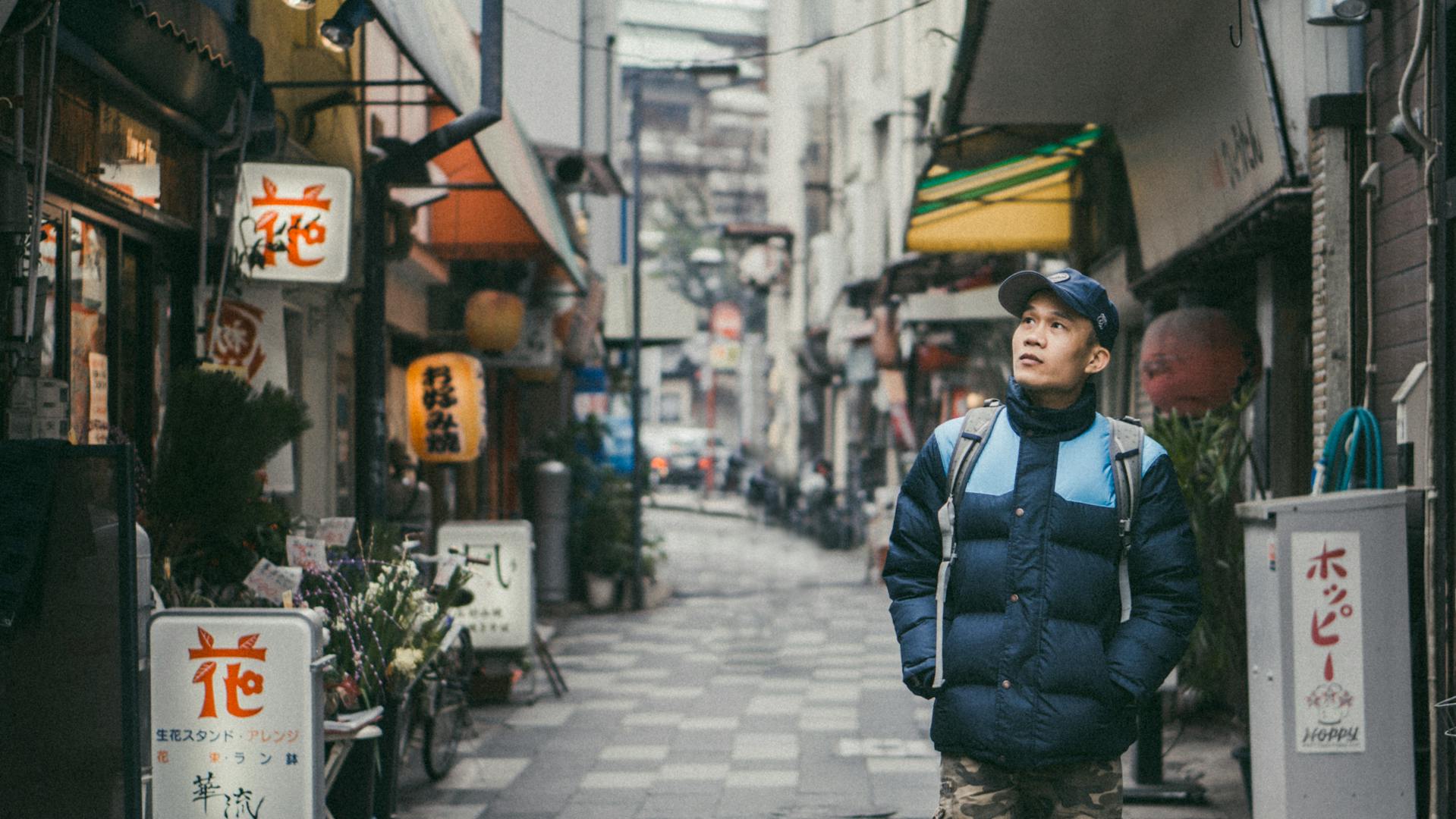
174 Basic Japanese Words and Phrases to Survive Everyday Life in Japan
With these 174 essential Japanese words and phrases, you’ll be prepared for any situation.
The Japanese language might take years to master, but what if you need to get through a conversation right now? Start by learning these Japanese daily vocabulary and the rest will follow.
Just click on a word or phrase to hear its native pronunciation.
Contents
- Greetings and Starters
- Basic Conversation
- Japanese Pronouns
- Saying “Yes” and “No”
- Saying “I Don’t Understand”
- Saying “Please”
- Saying “Thank You” and “You’re Welcome”
- Saying “Sorry” and “Excuse Me”
- Saying “Goodbye”
- Basic Question Words
- Travel Vocabulary
- Phrases for Dining at a Restaurant
- Shopping in Japanese
- Phrases for Home
- Phrases for Casual Conversations
- Japanese Slang
- And One More Thing...
Download: This blog post is available as a convenient and portable PDF that you can take anywhere. Click here to get a copy. (Download)
Greetings and Starters
1. ohayou gozaimasu ( おはようございます ) — Good morning
The casual version of this greeting is ohayou ( おはよう ). In a workplace, someone greeting a colleague for the first time that day might use this phrase even if the clock reads 7 p.m.
2. konnichiwa ( こんにちは ) — Hello / Good afternoon
Konnichiwa can be used any time of day as a general greeting, but it’s most commonly used between 11 a.m. and 5 p.m.
3. konbanwa ( こんばんは ) — Good evening
From 5 p.m. onwards, you use konbanwa to greet people. Note that, in this case, は is read as “wa” rather than “ha.”
4. hisashiburi ( 久しぶり ) — It’s been a while
Use this for someone you haven’t seen in a long time.
5. o genki desu ka? ( お元気ですか? ) — How are you?
This is a polite way to ask someone how they are.
6. genki desu ( 元気です ) — I’m fine
Likewise, this is the most polite response to o genkidesu ka?
Basic Conversation
7. o namae wa nan desu ka? ( お名前は何ですか? ) — What’s your name?
This is a polite way to ask someone for their name. The more informal version is O namae wa? ( おなまえは? ) — Your name is…?
8. … desu ( …です ) — I am … / It is …
Think of desu as roughly equivalent to the English word “to be.” Unlike “to be,” desu stays the same regardless of the subject.
For example:
- Tomu desu ( トムです ) — I’m Tom
- Atsui desu ( 暑い です ) — It’s hot/I’m hot
- Osoi desu ( 遅いです ) — You’re late!
You can append this word to adjectives like:
Notice in the native Japanese pronunciation that the su is hardly audible. So, when you say desu, it sounds more like “dess” than “de-soo.”
9. watashi wa … desu ( 私は…です ) — I am …
This is the politest way to introduce yourself. For example:
Watashi wa Pouru desu.
私はポールです。
I am Paul.
Be careful not to overuse watashi wa beyond introductions, though. In most cases, “your name/subject + -desu” will suffice if it’s clear from the context who or what you’re referring to.
10. … karakimashita ( … から来ました ) — I’m from …
Simply use this to describe what country you’re from. Here’s a list of some countries in Japanese:
- Igirisu ( イギリス ) — United Kingdom
- Doitsu ( ドイツ ) — Germany
- Chuugoku ( 中国 ) — China
- Kankoku ( 韓国 ) — Korea
Many others are almost identical in Japanese, such as:
- Kanada ( カナダ ) — Canada
- Furansu ( フランス ) — France
- Supein ( スペイン ) — Spain
- Amerika ( アメリカ ) — United States of America
- Ousutoraria ( オーストラリア ) — Australia
If you don’t know how to say your country’s name, say it in English—chances are, people will understand where you mean.
11. suki desu ( 好きです ) — I like it
You can say what you like by adding … ga suki desu ( が好きです ). For example:
Okashi ga suki desu.
お菓子が好きです。
I like sweets.
12. ii desu yo ( いいですよ ) — It’s good
You’ll also often hear ii yo ( いいよ ), especially from women/girls.
13. suki dewa arimasen ( 好きではありません ) — I don’t like it
The less formal version would be suki dewa nai ( 好きではない ).
14. dame desu ( ダメです ) — It’s no good
In more casual conversation, you can also say just:
15. takusan ( たくさん ) — A lot
Takusan is similar to ooi ( 多い ). The main difference is that takusan can function as a noun, adjective or adverb, while ooi is only an adjective. For example:
Kooen ni hana ga takusan arimasu.
公園に花がたくさんあります。
There are lots of flowers in the park.
16. sukoshi ( 少し ) — A little
Here’s an example of it in use:
Koohii ni satou wo sukoshi onegaishimasu.
コーヒーに砂糖をすこしお願いします。
A little sugar in my coffee, please.
17. ima nanji desu ka? ( 今何時ですか? ) — What time is it?
In casual situations, saying ima nanji? ( 今何時? ) will work just fine. You’re probably already noticing that desu can be changed or even dropped in casual situations.
18. … ji desu ( …時です ) — It’s … o’clock
This, plus a number, is all you need to tell the time! For example:
Ichiji desu.
一時です。
It’s 1 o’clock.
19. nihongo de hanashimashou ( 日本語で話しましょう ) — Let’s talk in Japanese
Once you kick off a convo with this phrase, make sure you’re ready to do a lot of talking!
By the way, when you see or hear a verb paired with the suffix -mashou (- ましょう ), it suggests that someone is trying to get you to do the verb prior to -mashou.
20. yoroshiku onegaishimasu ( よろしくお願いします ) — Nice to meet you
Yoroshiku onegaishimasu doesn’t have a direct English translation, but it can often be interpreted as “Please (do this favor for me),” “I am counting on you” or “I leave it to you.” You’ll often hear this from people making requests, starting a new relationship or asking for someone’s cooperation.
Japanese Pronouns
Japanese has a wide variety of pronouns you can use, helping you make your sentences more direct when you’re referring to yourself, your friend or your friend’s boyfriend.
21. watashi ( 私 ) — I (all genders)
Watashi is the go-to in polite situations. It’s sometimes pronounced watakushi ( わたくし ) for extra formality, and some female speakers may shorten it to atashi ( あたし ) in casual settings. No matter the pronunciation, though, they all use the character 私 in writing.
22. boku ( 僕 ) — I (usually male)
Boku is mostly used by men and boys when they’re among friends. Nowadays, some girls use boku as well, which gives off an air of tomboyish-ness.
23. ore ( 俺 ) — I (male)
While boku is sometimes used by girls, ore is an exclusively male pronoun. It gives off a bit of a rough image, so it’s only used among close friends in casual situations.
24. jibun ( 自分 ) — Myself / Yourself / Themselves
Jibun is used to refer to a sense of self. It can also take a variety of forms, like:
Also, it’s a more polite way of referring to someone else.
25. anata ( あなた ) — You
Anata translates to “you,” but it’s not used in the same way it is in English. Most of the time, Japanese omits “you” altogether, favoring a person’s name instead. This form can be used as a term of endearment between couples.
26. kimi ( 君 ) — You
Kimi is largely used to talk to someone of lower status than yourself, such as a boss talking to their employees. It’s also used to add some pizzazz to writing, such as in the hit movie “Kimi no na wa” ( 君の名は ) — Your Name.
27. kare ( 彼 ) — He / him
While the Japanese language does favor using a person’s name over second- or third-person pronouns, using kare is perfectly okay. Plus, kare can also refer to someone’s boyfriend.
28. kanojo ( 彼女 ) — She / her
This is the feminine counterpart of kare. Like kare, kanojo can also be used to refer to a girlfriend.
29. tachi ( …たち ) — “… and company” (pluralizes pronouns)
To turn a pronoun into a plural, just add -tachi. For example:
- watashi tachi ( 私たち ) — We
- kimi tachi ( 君たち ) — You (plural)
- kanojo tachi ( 彼女たち ) — A group of women
- Sasuke tachi ( サスケたち ) — Sasuke and his friends
30. kore ( これ ) — This
This is used to refer to something close to the speaker.
31. sore ( それ ) — That
This one is used to refer to something close to the listener.
32. are ( あれ ) — That (over there)
This is used to refer to something far from both the speaker and the listener.
Saying “Yes” and “No”
33. hai ( はい ) — Yes
Even if you only have a passing familiarity with Japanese, chances are you’ve heard this monosyllabic affirmation before. Aside from hai, another way to say “yes” in Japanese is with non-verbal cues like nodding your head up and down or giving a thumbs up.
34. sou desu ka ( そうですか ) — Is that right?
Saying this while nodding is a polite way to show that you’re paying attention when someone tells you something new. You can also use:
These are less formal, but generally acceptable and certainly not rude.
35. sou desu ( そうです ) — That’s right
You can also say hai, sou desu ( はい ,そうです ) — Yes, that’s right. However, the hai is implied and you can leave it off. In casual contexts, you can also just say sou ( そう ).
36. un ( うん ) / aa ( ああ ) / ee ( ええ )
The Japanese use aizuchi ( 相槌 ), which are simple words or gestures that indicate you’re listening.
They don’t have direct English translations, but you could say they’re similar to saying “uh-huh” or “mm-hm” in English.
37. mochiron ( もちろん ) — Of course
This is not the “of course” you use to emphasize a point, but rather the one in “Of course, I’ll do that favor you’re asking me!”
38. ii desu yo ( いいですよ ) — Okay
This literally means “That’s good!” As such, it can be used to show your approval of something.
39. iie ( いいえ ) — no
This is the no-nonsense way to say “no.” However, Japanese culture prefers less direct approaches.
There are also several nonverbal ways to express “no.” Rubbing the back of the neck, making an “X” with both arms or even taking in a deep breath all mean “no.”
40. uun ( ううん )
This is a sound that indicates you don’t quite agree with what the person is saying.
41. iya ( いやー )
Whether this interjection means “no” depends on the context. If you suggest dinner and someone responds with iya…, they’re probably trying to politely turn you down with a non-committal “Well, you see…”
42. chotto… ( ちょっと… ) — A little…
If you use chotto, remember to trail off at the end, as you’re basically saying, “It’s a little…” For instance, if someone asks what you’re doing tomorrow afternoon with the aim to meet up, you can respond with “Chotto…” to mean that tomorrow afternoon’s not an ideal time for you.
In business settings, two simple phrases to convey “no” without saying “no” are:
While not outright saying “no,” they express a refusal to the listener without sounding impolite.
Saying “I Don’t Understand”
43. wakarimasen ( 分かりません ) — I don’t understand
If you’re around friends, you can use the casual variant, wakaranai ( 分からない ).
44. mou ichido itte kudasai ( もう一度言ってください ) — Please say that again
If someone is speaking in Japanese far too quickly for you, you can use this phrase to politely tell them to repeat themselves. You can also say:
- yukkuri onegai shimasu ( ゆっくりお願いします ) — Slowly, please
- kikoemasen deshita ( 聞こえませんでした ) — I didn’t hear that
Saying “Please”
45. kudasai ( ください ) — Please (requesting)
The word kudasai is used when making requests, as in these examples:
Isoide kudasai.
急いでください。
Please hurry.
Koohii o kudasai?
コーヒーをください?
Can I please have a coffee?
46. douzo ( どうぞ ) — Please (offering)
Using douzo is like saying, “Please go ahead.” You can use it when ushering someone through the door before you, or offering a coworker some delicious snacks, for example.
Saying “Thank You” and “You’re Welcome”
47. arigatou gozaimasu ( ありがとうございます ) — Thank you
The friendlier, more casual way to say thanks is arigatou ( ありがとう ). You’ll also see its abbreviation, ari ( あり ), pretty often on Japanese message boards.
48. doumo ( どうも ) — Thank you
If you’re close friends with the person you’re thanking, you could also say doumo. In fact, you’ll sometimes see these combinations, which are used in very formal contexts:
- doumo arigatou gozaimasu ( どうもありがとうございます )
- doumo arigatou ( どうもありがとう )
Most of the time, though, just arigatou gozaimasu will suffice.
49. otsukaresama desu ( お疲れ様です ) — Thank you for your efforts
This expression is often said as a parting sentiment when you, or someone else, finishes their work. You can think of it as saying, “That’s a wrap for the day.”
50. iroiro arigatou gozaimashita ( 色々ありがとうございました ) — Thank you for everything
Iroiro ( 色々 ) literally means “various things.” So, this is the expression to use if you’re thanking someone for doing a lot of things for you or if you’re not sure exactly what to thank them for.
51. mondai nai desu ( 問題ないです ) — No problem
Mondai ( 問題 ) means “problem,” and the addition of nai ( ない ) negates the problem. Therefore, you’re saying that the favor you performed didn’t trouble you at all.
52. douitashimashite ( どういたしまして ) — You’re welcome
Although this is technically the correct response to “Thank you,” it’s rarely used these days in casual Japanese conversation. But it’s still worth knowing if you want to respond to someone’s gratitude in a formal context.
Saying “Sorry” and “Excuse Me”
53. shitsurei shimasu ( 失礼します ) — Excuse me (for my rudeness)
Another expression commonly heard in the office, shitsurei shimasu is used when you’re leaving a room. It’s similar to saying, “Sorry to have bothered you.” You can also end a formal or polite phone call with this phrase.
If you watch Japanese media often, you’ll also hear shitsurei shimasu when someone is entering a room.
Speaking of authentic Japanese media, you can find plenty of those on the language learning platform FluentU.
FluentU takes authentic videos—like music videos, movie trailers, news and inspiring talks—and turns them into personalized language learning lessons.
You can try FluentU for free for 2 weeks. Check out the website or download the iOS app or Android app.
P.S. Click here to take advantage of our current sale! (Expires at the end of this month.)

54. sumimasen ( すみません ) — Excuse me, I’m sorry
Sumimasen is often used to say “Excuse me” (like if you need help getting directions ) and “Sorry” (like when you accidentally nudge someone). It can also be said as a “thank you” when you’ve troubled someone—think “Thanks for letting me put you out.”
55. gomen nasai ( ごめんなさい ) — I’m sorry
In casual situations and among family members and friends, gomen nasai replaces sumimasen when saying sorry.
56. gomen: ごめん — I’m sorry
Gomen is even less formal than gomen nasai, and is reserved for people you’re truly close to.
Saying “Goodbye”
57. jaa, mata! ( じゃあ、また! ) — See you later!
You can replace mata with dewa mata ( ではまた ) for a slightly more formal expression. There’s also:
58. o genki de ( お元気で ) — Take care
If “see you” is a little too casual for you, then you can say o genki de instead. This literally means “be healthy” and can be used to say, “Good luck!”
59. meado wo oshiete moraemasu ka? ( メアドを教えてもらえますか? ) — Could I have your e-mail address?
If that’s a little too long to memorize, you can ask:
Meado wo oshiete?
メアドを教えて?
Can I get your e-mail address? (Literally, “Teach me your email?”)
60. tegami kaku yo ( 手紙書くよ ) — I’ll write you letters
Do you prefer exchanging physical letters instead of emails? If so, keep this phrase handy for your Japanese penpals!
61. tsuitara, … shimasu ( 着いたら、… します ) — I’ll … you when I arrive
You can use this phrase as follows:
- tsuitara, denwa shimasu ( 着いたら、電話します ) — I’ll call you when I arrive
- tsuitara, meeru shimasu ( 着いたら、メールします ) — I’ll email you when I arrive
62. mata sugu ni kimasu yo: またすぐに来ますよ — I’ll be back soon
This is generally a casual phrase, as indicated by the ending yo ( よ ).
63. asobi ni kite kudasai ne ( 遊びに来てくださいね ) — Come visit me
Although asobi ( 遊び ) in this context means “to visit,” that word can also mean “to play”—adding an extra sense of warmth to this phrase.
64. watashi no ie dewa, itsudemo anata wo kangei shimasu yo! ( わたしの家ではいつでもあなたを歓迎しますよ! ) — You’re always welcome in my home!
Basic Question Words
Knowing some of the essential Japanese question words will go a long way toward getting your questions across to Japanese speakers.
65. nani ( 何 ) — What
Nani can be used alone or in a sentence. When placed before desu, the word nani drops its -i and becomes nan. For example:
Kore wa nan desu ka?
これは何ですか?
What is this? (Remember this phrase in particular—it’s going to come in handy in a variety of situations!)
66. doko ( どこ ) — Where
Doko is used when asking for a location, like this:
Toire wa doko desu ka?
トイレはどこですか ?
Where is the toilet?
If you don’t know the word for the place you’re looking for, another helpful option is pointing to it on a map and asking:
Doko desu ka?
どこですか ?
Where is it?
67. dare ( 誰 ) — Who
If you’re referring to a specific person, add it before dare:
Kanojo wa dare desu ka?
彼女は誰ですか?
Who is she?
68. itsu ( いつ ) — When
Itsu is typically used in the following structure: itsu + verb (in the -masu form) or event + question marker ka.
Itsu kaerimasu ka?
いつ帰りますか?
When are you coming back?
69. doushite ( どうして ) — Why
If you need to ask politely, say it as Doushite desu ka? ( どうしてですか? ). If you’re with friends or family, you can use the casual form nande ( 何で ) instead.
70. naze ( なぜ ) — Why
This is pretty similar to doushite, but a bit more formal. Naze is also used to ask the reason behind something, while doushite has a nuance of “how” to it.
71. ikura ( いくら ) — How much
Just tack on the question marker desu ka? ( ですか? ) at the end of this word, and you’ll get ikura desu ka? ( いくらですか? )
A quick not: ikura also sounds like “salmon roe” ( イクラ ). So, if you’re using this phrase, make sure it’s clear from the context that you’re saying “How much?” and not “Is this salmon roe?”—the latter of which would be イクラですか?
72. ikutsu ( いくつ ) — How many
This is a general word to ask “how much” or “how many” of a numerical amount. For example:
Okashi wa ikutsu hoshii desu ka?
お菓子はいくつ欲しいですか?
How many snacks do you want?
It can also be used to ask someone’s age:
Oikutsu desu ka?
おいくつですか?
How old are you?
Here, ikutsu is preceded by o ( お ), which makes your question sound more polite and palatable for older folks!
73. nan … ( 何… ) — How many
Nan is a more specific way of asking how much of something there is. It works by combining nan with a counter, such as:
- nanhon ( 何本 ) — How many long cylindrical objects?
- nannin ( 何人 ) — How many people?
- nanmai ( 何枚 ) — How many sheets?
74. dochira ( どちら ) — Which one?
Use this phrase when you’re referring to a choice between two objects.
75. dore ( どれ ) — Which one?
Use this one when you’re referring to a choice between three or more objects.
Travel Vocabulary
This list of Japanese daily vocabulary will give you what you need to get around Japan and, in case of an emergency, ask for help.
Public Transport
76. sumimasen, … wa doko desu ka? ( すみません、… はどこですか? — Excuse me, where’s the …?
This construction comes in handy for phrases like the following. Just tack on your intended destination before wa doko desu ka:
- sumimasen, chikatetsu wa doko desu ka? ( すみません、地下鉄はどこですか? — Excuse me, where’s the subway?
- sumimasen, eki wa doko desu ka ( すみません、駅はどこですか? ) — Excuse me, where’s the station?
- sumimasen, takushii no noriba wa dokodesu ka? ( すみません、タクシーの乗り場はどこですか? ) — Where is the taxi platform?
77. kono densha wa … eki ni tomarimasu ka? ( この電車は… 駅に停まりますか? ) — Does this train stop at … station?
To say that Japan has one of the most intricate train systems would be an understatement. Luckily, you can easily untangle that intricacy with this simple phrase!
78. kono basu wa … ni ikimasu ka? ( このバスは…に行きますか? ) — Does this bus go to … ?
If you’re not sure where your public transport is stopping, you can also use this phrase. You can substitute basu with densha ( 電車 ) — train, takushi ( タクシー ) — taxi, and so on.
79. … made tsureteitte kudasai ( …まで連れて行ってください ) — Please take me to …
Use this phrase to tell the taxi driver where you want to go.
Hotel Phrases
80. yoyaku wo shitainodesuga ( 予約をしたいのですが ) — I’d like to make a reservation.
Like most hotels around the world, it’s advisable to make a booking in advance when it comes to Japanese hotels. However, if your hotel allows it, you may be able to book at the front desk.
81. yoyaku shiteimasu ( 予約しています ) — I have a reservation.
Use this phrase if you’ve already made a booking in advance.
82. chekkuauto wa nanji desu ka? ( チェックアウトは何時ですか? ) — What time is checkout?
This one is self-explanatory. You can also replace the word chekkuauto ( チェックアウト ) with anything that you want to know the time of.
Emergencies
83. michi ni mayotte shimaimashita ( 道に迷ってしまいました ) — I’ve lost my way.
If that feels like a bit of a mouthful, you could also just say mayotte shimaimashita ( 迷ってしまいました ).
84. tasukete! ( 助けて! ) — Help! (for emergencies)
All I’m going to say is, if you end up forgetting every other phrase that’s been listed so far, don’t forget this one. It could save your life—literally!
85. tetsudatte kuremasen ka? ( 手伝ってくれませんか? ) — Can you help me? (for everyday situations)
If you’re not in a life-threatening situation, tetsudatte kuremasen ka will do.
86. … wo yondekudasai ( …を呼んでください ) — Please call the …
Use this construction when you want someone else to contact emergency services, like so:
- keisatsu wo yondekudasai ( 警察を呼んでください ) — Please call the police.
- kyuukyuusha wo yondekudasai ( 救急車を呼んでください — Please call an ambulance.
Here’s a useful note: The emergency numbers in Japan are 119 for an ambulance and 110 for the police.
Phrases for Dining at a Restaurant
Okay, now that we’ve gotten the formalities out of the way, it’s time to talk about what’s really important: food!
Here are some of the food words you should know:
87. kome ( 米 ) — Rice (raw)
88. yasai ( 野菜 ) — Vegetables
89. kudamono ( 果物 ) — Fruit
90. miruku ( ミルク ) — Milk
91. pan ( パン ) — Bread
92. pasuta ( パスタ ) — Pasta
93. niku ( 肉 ) — Meat
94. jagaimo ( じゃがいも ) — Potatoes
95. tamago ( 卵 ) — Eggs
Saying You’re Hungry
96. onaka ga suite imasu (お腹が空いてます) — I’m hungry
This literally means your stomach has become empty. Some variations are:
- onaka ga suita (お腹が空いた) — informal
- onaka ga hetta ( お腹が減った ) — informal, often interchanged with onaka ga suita
- hara hetta ( 腹へった ) — masculine
- onaka ga pekopeko ( お腹がペコペコ ) — onomatopoeia that means your stomach is growling
97. mada tabete imasen ( まだ食べていません ) — I haven’t eaten yet
For a more casual version, go ahead and say mada tabeteinai ( まだ食べていない ).
Before the Meal
98. menyuu, onegai shimasu ( メニュー、お願いします ) — Please bring me a menu
You can opt for the more formal version:
Menyuu, onegai dekimasu ka?
メニュー、お願いできますか?
May I have the menu?
Also, you can substitute menyuu ( メニュー ) with:
99. kore wa nan desu ka? ( これは何ですか? ) — What’s this?
If the menu is entirely in Japanese, you can point to an item you want and direct this question at the waiter.
100. kore o tabete mitai desu ( これを食べてみたいです ) — I’d like to try this
If you’re a little more adventurous, just point to the item you want and run with this phrase!
101. … wo kudasai ( …をください ) — I’d like …
State whatever you’d like to order, and follow it with … wo kudasai. For example:
Koohii wo kudasai.
コーヒーをください?
I’d like a coffee, please.
102. … ga arimasu ka? ( …がありますか? ) — Do you have … ?
As a reply, you’ll simply hear arimasu ( あります ).
103. … tsuki desu ka ( …付きですか? ) — Does it come with … ?
If you want to know if certain foods are included with your order, use this to ask. For example:
Furaido poteto tsuki desu ka?
フライドポテト付きですか?
Does it come with fries?
104. … ga taberaremasen ( …が食べられません ) — I can’t eat …
This is a good phrase to learn for vegetarians, vegans and other people with dietary restrictions. For example, niku ( 肉 ) is “meat” and sakana ( 魚 ) is “fish.” So if you’re on a strict veg diet, you can say:
Niku to sakana ga taberaremasen.
肉と魚が食べられません。
I can’t eat meat and fish.
105. … arerugii ga arimasu ( …アレルギーがあります ) — I’m allergic to …
State whatever you’re allergic to and add this phrase to the end. Just to be safe rather than sorry, you can ask: … ga haitte imasu ka? ( が入っています か? ) which means, “Are / Is there any … in it?” For example:
Tamago ga haitte imasu ka?
卵が入っていますか?
Are there any eggs in it?
106. kore wa … desu ka? ( これは…ですか? ) — Is this … ?
If you want to be more direct about whether a specific food meets your dietary requirements, you can insert one or more of the following between kore wa ( これは ) and desu ka ( ですか ):
- guruten hurii ( グルテンフリー ) — Gluten-free
- bejitarian ( ベジタリアン ) — Vegetarian
- biigan ( ビーガン ) — Vegan
- nyuseihin hushiyou ( 乳製品不使用 ) — Dairy-free
You can also ask about portions with the same construction and by substituting the following:
107. kore wa nan karorīdesu ka? ( これは何カロリーですか? ) — How many calories are in this?
Generally, Japanese food is quite healthy and doesn’t have a ton of calories, but it won’t hurt to check!
During the Meal
108. itadakimasu ( いただきます ) — Let’s dig in
This is used before digging into your meal, similar to “Bon appétit.”
109. mazui desu ( まずいです ) — It’s terrible
Ideally, you don’t want to end up in a restaurant where you have to say something like this, but sometimes it’s unavoidable!
110. okawari ( おかわり ) — Another serving, please
If you really like your food, you can let the lovely folks at the restaurant know by saying okawari. The more polite version would be okawari o kudasai ( おかわりをください ).
You can also say, depending on the context:
- hai, onegaishimasu ( はい、お願いします ) — Yes, please (when offered food)
- iie, kekkoudesu ( いいえ、結構です ) — I’m fine, thank you (when offered food)
111. onaka ga ippai desu ( お腹が一杯です ) — I’m full
112. kanpai! ( 乾杯! ) — Cheers!
When you’re drinking with other people, it’s essential to clink your glasses together and say kanpai! You say this phrase before drinking, not after.
After the Meal
113. oishii desu! ( 美味しいです! ) — It’s delicious!
If you’re eyeballing a slice of cake, then oishisou ( 美味しそう ), meaning “It looks delicious,” could be useful. A casual and “manly” way to say something is delicious is umai ( 旨い ).
114. gochisousama deshita ( ごちそうさまでした ) — Thanks for the meal
Like itadakimasu, this phrase is a fixture at every meal. You say this when the meal is finished.
115. okaikei, onegai shimasu ( お会計、お願いします ) — Check, please
This is the most common way to ask for a check. You may also hear okanjou, onegai shimasu ( お勘定 、お願いします ), though not as often. Just note that the word for “check” is kaikei ( 会計 ).
116. warikan ni shite kudasai ( 割り勘にしてください ) — Split the check, please
If there are multiple people at the same table, this phrase will come in handy, as will betsubetsu de onegaishimasu ( 別々でお願いします ) — We’ll pay separately, please.
Cooking Phrases
You’ll likely be cooking for yourself at some point, even if it’s just toast. Here are some useful Japanese words if you plan on cooking.
117. zairyo ( 材料 ) — Ingredients
118. ryori ( 料理 ) — Cooking
119. o bento ( お弁当 ) — Readymade meal/TV dinner
120. retoruto gohan ( レトルトご飯 ) — Instant rice (for the microwave)
121. guramu ( グラム ) — Grams
122. kiroguramu ( キログラム ) — Kilograms
Shopping in Japanese
With streets brimming with food stalls and vendors, the high-end boutiques lining Ginza and the ultra-cool and unique souvenir shops, there’s no way to avoid shopping while traveling through Japan.
123. kore wa nan desu ka? ( これは何ですか ) — What is this?
If you want to be more specific, you could also say kore wa nan to iu mono desu ka? ( これは何というものですか? ) — What’s this called?
124. kore wa ikura desu ka? ( これはいくらですか? ) — How much is this?
If it’s clear from the context what you’re referring to, you can also just say ikura desu ka? いくらですか?
125. chotto takai desu ( ちょっと高いです ) — It’s a bit expensive
If you haven’t started your adventure of learning Japanese adjectives, then here’s some essential shopping vocabulary:
126. … ga ari masu ka ( _がありますか? ) — Do you have…?
127. hoka no iro ga arimasu ka? ( 他の色がありますか? ) — Do you have another color?
Some colors you may come across include:
128. … wo kudasai ( _をください ) — I’d like …, please.
129. sore wo itadakimasu ( それを頂きます ) — I’ll take it
If the phrase itadakimasu sounds familiar, that’s because it’s also the one used when you’re about to dig into a tasty meal. In the same way, saying sore o itadakimasu when you’re buying something expresses that you’re thankful for what you bought.
130. kurejitto kaado wa tsukaemasu ka? ( クレジットカードは使えますか? ) — Can I use my credit card?
If you’d like to use a traveler’s check, then replace kurejitto kaado with: toraberaazu chekku ( トラベラーズチェック ) — traveler’s check.
Your Suica and Pasmo cards, which are rechargeable cards you can use on Japanese trains, can also be used to pay for taxis or your groceries at select stores. You can ask:
Suika wa tsukaemasu ka?
スイカわつかえますか?
Can I use my Suica?
131. tsutsunde itadakemasu ka? ( 包んでいただけますか? ) — Can I have it gift-wrapped?
132. hai, onegaishimasu ( はい、お願いします ) — Yes, please
133. īe, kekkō desu ( いいえ、結構です ) — No, thank you
Common Phrases You’ll Hear in Japanese Shops
If you’re wondering what the shopkeepers mean when they throw these phrases at you—well, now you know!
134. irasshaimase ( いらっしゃいませ ) — Welcome
You will hear a chorus of irasshaimase! when you enter a shop.
135. honjitsu wa (_) ga seru desu ( 本日は (_) がセールです ) — (This product) is on sale today
_ いかがですか? is often used to invite you to take a look at specific products or try a free sample. You may also come across the term hangaku ( 半額 ) — half-price.
136. fukuro ni ire masu ka? ( 袋に入れますか? ) — Would you like a bag?
Got a ton of items to carry home? If the Japanese shop you’re in graciously offers you this, lucky you!
137. ni nari masu (amount) ( になります ) — That’s (amount), please
138. wo okaeshi itashi masu (amount) ( をお返しいたします ) — Here’s your change (+ amount)
Shopping Words in Japanese
139. en ( 円 ) — yen
In Japan, the currency is Japanese yen. 100 yen usually comes to around $0.90 to $1.10 USD. If you think of 100 yen as around a dollar when you go shopping, it’s a good way to keep track of your budget.
140. suupaa ( スーパー ) — supermarket
141. konbiniensusutoa / konbini ( コンビニエンスストア / コンビニ ) — convenience store
142. yubin kyoku ( 郵便局 ) — post office
143. nichi yōhin ( 日用品 ) — groceries
144. kaimono kago ( 買い物かご ) — basket
145. shoppingu kato ( ショッピングカート ) — shopping cart
146. muryō sanpuru ( 無料サンプル ) — free sample
147. kaikei ( 会計 ) — cash register
Phrases for Home
148. tadaima ( ただいま ) — I’m back
Everyone says this when they arrive home. If you go out, say this when you get back to let everyone know you’ve arrived home safely. If you want to, you can also say it when coming back from the bathroom; it tends to go down well.
149. okaeri nasai ( おかえりなさい ) — Welcome back
This is said in response to tadaima. You can use this when someone else gets home, like when a parent returns from work or when a sibling gets back from cram school.
150. ofuro ni haitte mo ii desu ka? ( お風呂に入ってもいいですか? ) — May I take a bath?
In Japan, most families take a bath every night, and if you’re staying somewhere like with a host family, you’ll be welcome to have one too if you ask.
If you’d prefer to take a shower (I did), you can just replace the word ofuru ( お風呂 ) — bath with shawaa ( シャワー ) — shower. Just make sure you don’t throw the bath water out when you’re done, as the family shares the hot water.
151. oyasumi nasai ( おやすみなさい ) — Good night
You can also leave off the -nasai to make it less formal.
Phrases for Casual Conversations
Want to sound like a native when you know minimal Japanese? There are a few common phrases you can use with friends in casual conversations.
152. ikimashou ( 行きましょう ) — Let’s go
Once you’ve decided on your plans for the day with friends, it’s time to head out by saying this phrase.
153. tabemashou ( 食べましょう ) — Let’s eat
If you decide to have lunch with friends, state tabemashou!
154. nomimashou ( 飲みましょう ) — Let’s drink
You can also suggest grabbing a drink by using this phrase.
155. yattaa! ( やったー! ) — Yay!
This is generally an informal phrase. It’s something you use when you want to express that you’re excited, or that you’re happy about the outcome of something.
156. ureshii desu ( 嬉しいです ) — I’m happy
If you want to convey, in no uncertain terms, that you’re happy, then this is the phrase to whip out.
157. daijoubu desu ( 大丈夫です ) — I’m fine
Aside from conveying that you’re all right, this is a polite way to respectfully say “no,” such as when you’re done drinking for the night.
158. yoroshiku ne ( よろしくね ) — Nice to meet you
This is the casual version of yoroshiku onegaishimasu—a phrase that can also translate to “Please take care of me” or “I’ll leave it up to you.”
159. doushita no? ( どうしたの? ) — What’s wrong?
Does your friend seem down? Tell them this phrase to cheer them up.
160. yabai ( やばい ) — Awful or cool
While talking, your friend may mention they have an important test or date. Use yabai and depending on the context, it can mean “Awful” or “Cool.”
161. yokatta ( よかった ) — Good, excellent, nice
This is an expression of relief, a bit like “Oh, thank goodness!”
162. ganbatte ( 頑張って ) — Do your best
This simple word means either “Good luck” or “Do your best.” In more formal situations, you’d say Ganbatte kudasai ( 頑張ってください ).
163. omedetou! ( おめでとう! ) — Congrats!
The formal variant is omedetou gozaimasu ( おめでとうございます ) — Congratulations.
164. zenzen ( 全然 ) — Not at all (with neg. verb)
In a nutshell, zenzen is the Japanese phrase of denial. It can be used either sincerely or not, such as when answering your mother when she asks, “Am I bothering you?”
165. maji de? ( マジで? ) — Really?
You can express your surprise with this casual phrase, or its even more casual and assertive variant maji ka yo? ( マジかよ? )
166. hontou? ( 本当? ) — Really? / Seriously?
This word translates literally to “truth,” “reality,” “actuality” or “fact.” In question form, it comes across more like a surprised,“Are you serious?”
167. usoo! ( うそー! ) — No way!
This is another way to express surprise, which literally means “Lie!”
168. yappari ( やっぱり ) — As expected
If you’re not surprised, you can use this word to say, “I knew it!”
Japanese Slang
When you’re making friends, you’ll hear tons of these terms going back and forth. Many slang terms are written in katakana, which marks them as being casual words.
169. ukeru ( ウケる ) — Funny, hilarious
Let’s say your friend made a great joke. By saying ukeru, you’ll let him know he struck your funny bone.
170. chou ( 超 ) — Super
This word is used to add emphasis, like the words “really” or “very.” You could say, for example, that something is chou ukeru ( 超ウケる ) or very funny.
171. dasai ( ダサい ) — Uncool
You’ll often hear young people say dasai to refer to something that’s boring, unfashionable, etc.
172. kimoi ( キモい ) — Gross
Kimoi is a contraction of the words kimochi ( 気持ち ) — feeling, and warui ( 悪い ) — bad.
173. gachi ( ガチ ) — Totally, really, seriously
Gachi implies that something actually took place, or was really as intense as the speaker claims.
174. hanpa nai ( 半端ない ) — Crazy, insane
Hanpa nai means that something is awesome or insane, but in a good way, like an epic roller coaster ride.
And there you have it! With these phrases and some core vocabulary, you’ll be able to make small talk with new friends, or show others that you’re sincerely interested in learning Japanese.
Just by incorporating these Japanese daily vocabulary into your conversation, you’ll soon be sure to hear nihongo ga jouzu desu ne! ( 日本語が上手ですね ) — You’re good at speaking Japanese!
Download: This blog post is available as a convenient and portable PDF that you can take anywhere. Click here to get a copy. (Download)
And One More Thing...
If you love learning Japanese with authentic materials, then I should also tell you more about FluentU.
FluentU naturally and gradually eases you into learning Japanese language and culture. You'll learn real Japanese as it's spoken in real life.
FluentU has a broad range of contemporary videos as you'll see below:

FluentU makes these native Japanese videos approachable through interactive transcripts. Tap on any word to look it up instantly.

All definitions have multiple examples, and they're written for Japanese learners like you. Tap to add words you'd like to review to a vocab list.

And FluentU has a learn mode which turns every video into a language learning lesson. You can always swipe left or right to see more examples.

The best part? FluentU keeps track of your vocabulary, and gives you extra practice with difficult words. It'll even remind you when it’s time to review what you’ve learned. You'll have a 100% personalized experience.
Start using the FluentU website on your computer or tablet or, better yet, download the FluentU app from the iTunes or Google Play store. Click here to take advantage of our current sale! (Expires at the end of this month.)


















